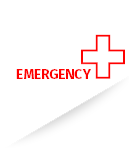Projekt leader: Prof. Udo Markert
Research group leader: Dr. rer. nat. Astrid Schmidt
Dr. rer. nat. José Martin Murrieta Coxca
M.Sc. Priska Streicher
cand. Dr. rer. nat. Johanna Liesa Gollasch
cand. Dr. rer. nat. Leon Philipp
The OptoBiopsie project is funded by the BMWi/ ZIM program (Central Innovation Program for SMEs of the Federal Ministry of Economics and Climate Protection) from 2022-2025. Cooperation partners from industry and universities are the company SQB Ilmenau, the Department of Nanobiosystems Engineering at the TU Ilmenau and the Placenta Lab at the Jena University Hospital.
The human placenta is an ethically uncomplicated organ that is permanently available worldwide and has great potential for use in toxicological studies. The placenta is available as a complete organ ex vivo in a vital state immediately after birth and has the enormous advantage of species specificity compared to numerous animal experiments. The placenta can be used to investigate the toxicity of substances such as drugs, environmental pollutants, cosmetic and food additives or pathogens. The placenta can be used as a whole organ, but for most questions small tissue samples are sufficient and allow larger numbers of tests on a single placenta.
The aim of the project is to standardize and accelerate the collection of these tissue samples using an intelligent optically controlled automated biopsy system so that numerous qualitatively similar samples can be taken from a placenta in a short time so that toxicological tests can be carried out on a large number of highly similar samples after the same ischemia time (time after leaving the body). The project will use artificial intelligence (AI) to develop an automated system based on optical recognition that can identify optimal positions on the surface of the placenta for taking ideal biopsies. The placenta laboratory at the UKJ will provide optical and biochemical data to train the system to develop these services using AI.
We focus to ensure that biopsies of similar tissue types can be taken using surface recognition. The most important distinguishable tissues include fetal arteries, fetal veins, fetal villous trunks and intervillous space with floating terminal villi. In this way, a selection could be automated, but also expanded to include aspects that would not be possible by eye alone. Subsequent toxicological tests would thus be based on very similar tissue samples and could be standardized at different locations.
Former employees and students:
Pharmacist cand. Dr. rer. nat. Rachel Zabel (2022)
Master's student Aleksandra Kurova (2023)


